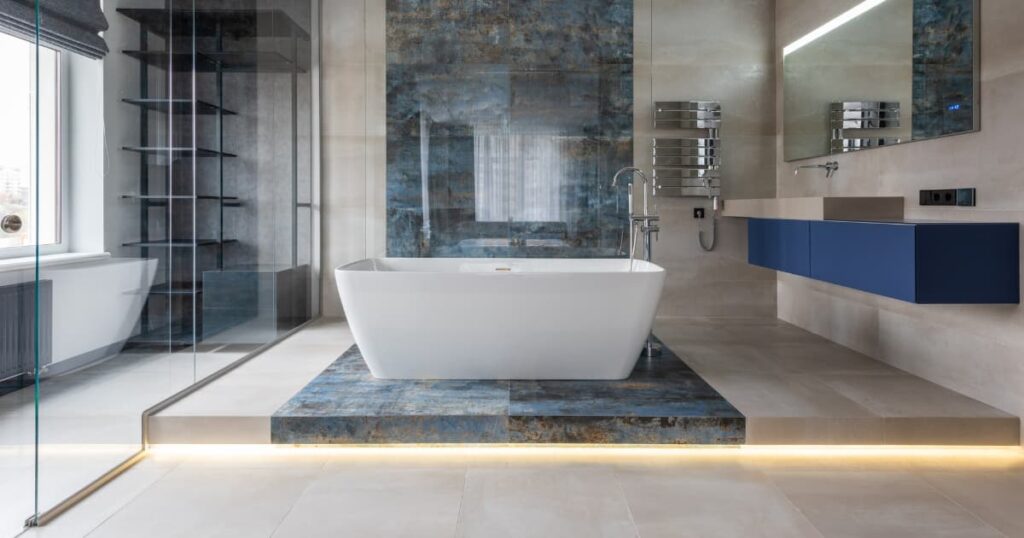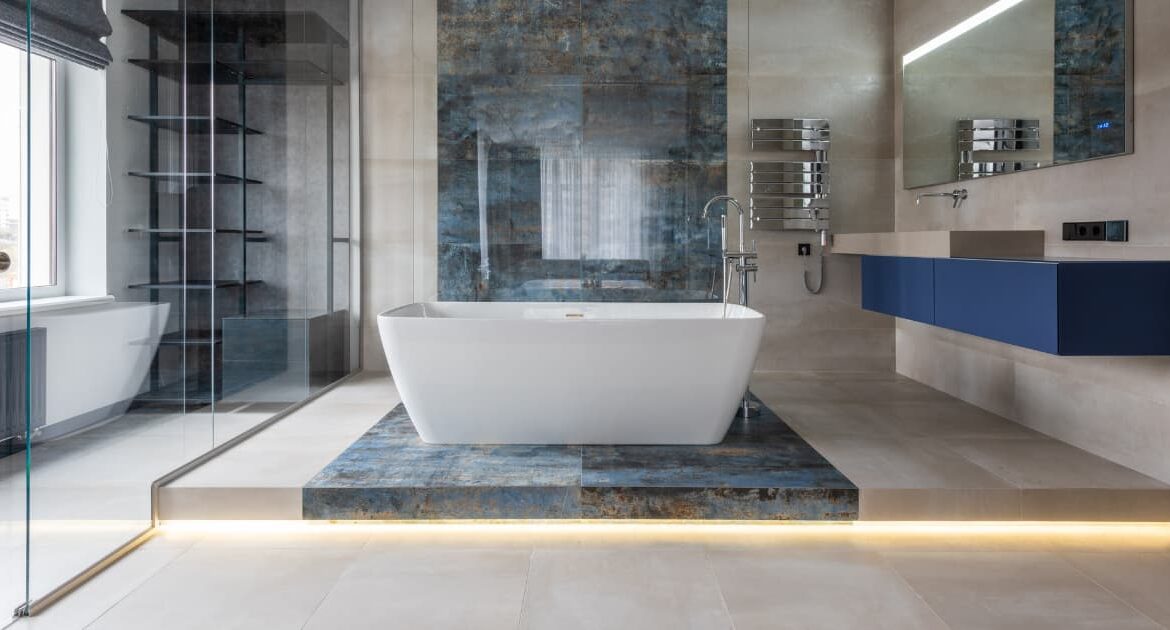
An increasingly popular way of keeping your home warm, underfloor heating provides unbeatable warmth underfoot and draws on the basic idea of heat rising. But does it really present more benefits to modern homeowners than classic heating? And how difficult and costly is it to install?
In this blog post, we answer all of your key questions about underfloor heating, to help you determine if it could be the right fit for you.
What is underfloor heating?
First and foremost, underfloor heating is an energy efficient way of heating your home – with pipes or electric wires running under the floor and turning the entire surface into a radiator. As a convenient and space-saving alternative to radiators, underfloor heating is become increasingly common across modern homes and new builds, fitting in with the minimalist way of decorating.
How underfloor heating works
Underfloor heating is remarkably simple, and because of that it is pretty easy to install. Pipes or electric wires are run underneath the floor that you require to be heated (see the next point for more on pipes vs. wires) and warm the interior space through a mixture of radiant heat and convection. The end result is a comfortable temperature throughout your space, which is manageable and consistent – aka, no more cold spots!
Electric vs. wet underfloor heating
The wet system works by filling the underfloor pipes with warm water, powered by a boiler or heat pump. It is the best and easiest solution for those who are building a home from scratch or completely renovating their space, and for those with large spaces that they want to heat.
Electric underfloor heating see cables run over the floor deck and beneath the flooring surface. This is the best solution for more targeted heating and for heating smaller spaces, for example a bathroom or small kitchen. Electric underfloor heating is also easier to install – though its running costs are much higher.
Types of wet underfloor heating

There are two different options for those considering wet underfloor heating:
- Buried underfloor heating – pipes are placed and buried in the floor screed, which is the layer underneath your flooring surface and keeps your floor level.
- Surface mounted underfloor heating – pipes are installed in insulated panels, which lie beneath the flooring surface. This is more expensive but less invasive than the buried underfloor heating solution.
Pros of underfloor heating
Aside from the obvious comfort and warmth for your feet, underfloor heating presents a number of benefits. For one thing, the warmth that comes from underfloor heating is both more consistent and more comfortable than that which is drawn from radiators and classic heating systems – heating the entire space rather than just the air around the heating implement. Underfloor heating is also energy efficient once set up and fully operating, frees up a lot more space in your home to indulge your wildest interior design schemes, and boasts a much higher lifespan than the average radiator.
Cons of underfloor heating
Every home solution has its drawbacks, with underfloor heating no different. Some of the main disadvantages raised by homeowners include the installation costs and time periods, and the fact that installation can affect the floor level in your home and thus require larger constructive work to fit the floor evenly.
All of these drawbacks should be considered before diving into an underfloor heating project, with our team on hand to answer questions and help you find the best solution for your home.
Can underfloor heating replace radiators?
Underfloor heating is, for many homeowners, the perfect solution for heating specific rooms in the home – for example the bathroom. Radiators are typically much cheaper to buy and install than underfloor heating systems and heating an entire property via the underfloor system can quickly become expensive due to installation as well as running costs. However, if you are building a new home or doing full property renovations then the benefits of underfloor heating are difficult to overlook – both in terms of the energy efficiency and the lifespan.
How is underfloor heating installed?
Depending on whether you opt for electric or a water-based system, the installation process for underfloor heating differs – however, the main parts you need to know about include the need to pull up your floor surface and then layer your chosen heating system atop the existing floor base. This is by far the easiest way but will raise the height of your floor – something which can be avoided by digging deeper into the foundations.
Our team can guide you through the best options for your home based on the size of your property, the existing heating system, and your desired aesthetic and environmental results. For more information and to discuss your own project, get in touch.

